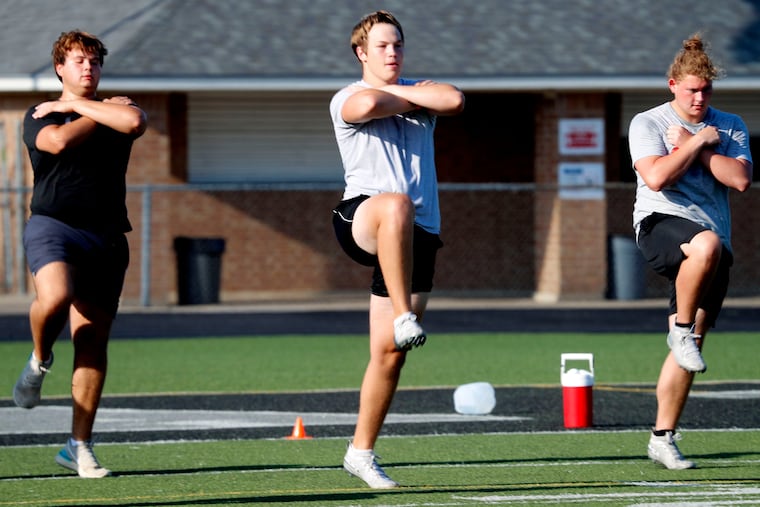How young athletes can maintain conditioning with fall sports postponed | Expert Opinion
Now could be the perfect time to consider cross-training or trying new sports or exercises to avoid overuse injuries.

Although some high schools in the Philadelphia region have chosen to resume sports amid the coronavirus pandemic, many other high school athletes are experiencing postponements and cancellations of their fall and winter sports seasons.
Fewer gatherings for sports and physical activity help limit the spread of COVID-19. To make up for the lost practices and games, high school athletes may need to alter their exercise routines and activities.
Although high school athletes are students first and foremost, physical activity is also an important piece of a child or adolescent’s overall health and well-being. Student-athletes can still make an effort to be creative and stay active this year.
In recent years, youth and high school sports have become increasingly specialized. Young athletes are encouraged to choose one sport and devote their entire focus to that one sport with school leagues, travel teams, and off-season workouts and training.
Now could be the perfect time to consider cross-training, or trying new sports or exercises.
For example, a young soccer player should still take part in dribbling and passing drills, and a young basketball player should still work on shooting and ball-handling skills. But focusing entirely on sport-specific activities can lead to overuse of specific muscle groups and increased risk for injury.
Fall sports postponements present the opportunity for young athletes to experiment with other types of exercise, including:
Stretching: Learn proper stretches to improve flexibility and limit risk for injury. Yoga also incorporates stretching and breathing to improve strength, flexibility, and relaxation.
Core exercises: Crunches and planks build abdominal and back muscles.
Cardio: Biking, running, jogging, hiking, walking and swimming strengthen the heart and lungs and improve endurance.
Lower-body exercises: Lunges and squats are simple and effective to strengthen quads and hamstrings.
Strength training: Push-ups, pull-ups and resistance-band exercises can easily be done in the home. If proper equipment is accessible, consider weight training to build muscle and improve overall health.
In addition, a well-balanced diet provides the foundation for young athletes to continue healthy habits into adulthood. The off-season is the ideal time for young athletes to learn proper nutrition and the importance of balancing carbohydrates, proteins and healthy fats.
Young athletes should consider creating an exercise schedule but also be flexible and adjust accordingly to guidelines from coaches and parents.
Use common sense when exercising during this time. Avoid large gatherings and choose exercises that are inherently physically distanced, such as running and biking.
Make a conscious effort this fall to get outside, stay active, and try different exercises to work out a variety of muscle groups.
Michael Yang is the chief of sports medicine at Mercy Catholic Medical Center.